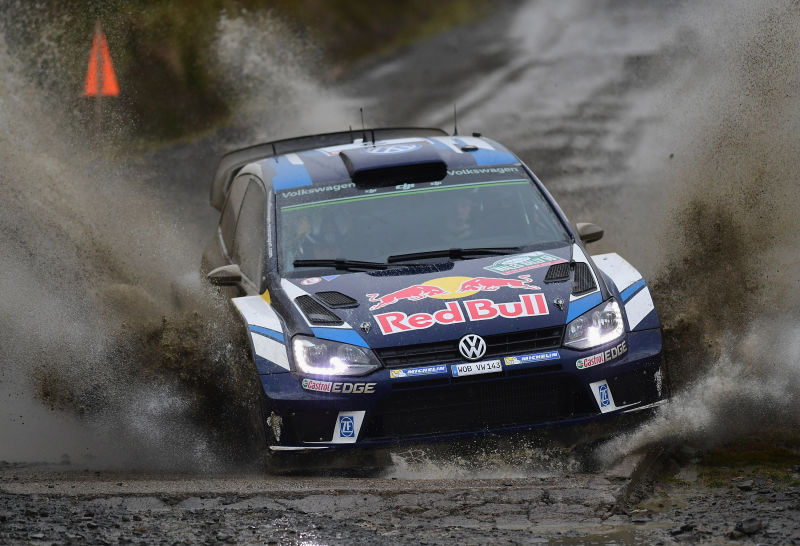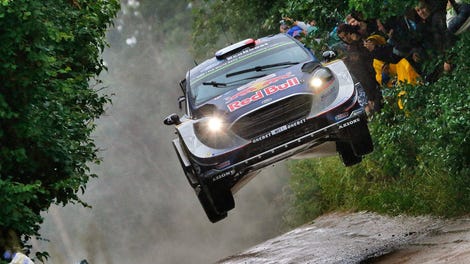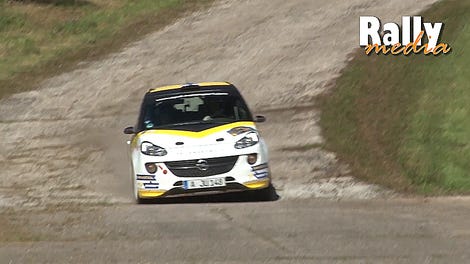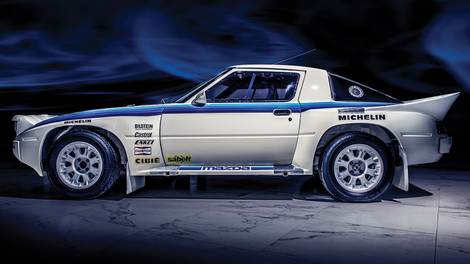
Rally racing is unique in the world of motorsport. You race on roads that are normally open to the public but now closed for car racing. What was an intersection with a stop sign last weekend is now a massive jump that lets you clear the whole intersection. You race up mountains and through the woods. You race in the rain, snow, on ice, sand, gravel and tarmac. You race during the day, the night, and in the fog. You race with a co-driver in cars that are street legal. There is nothing else like it.
(Welcome to Your Guide To Racing Subcultures, a new Jalopnik series where we tell you how to understand and get involved in the different ways to make cars go fast for competition.)
Advertisement
While not as popular in the United States, rally is still a very big deal. The top series is the World Rally Championship, which tours the world much like Formula One. It’s difficult to find current numbers, but 581 million people watched the WRC in 2014, making it one of the largest motorsports in the world.
One look at a car sideways on snow or 10 feet in the air over a jump at 120 mph and you realize why rally is so popular. It’s even more fun to drive. This is myself and Elliot Sherwood at the Sno*Drift rally in my $500 318i.
It’s good shit, is what I’m saying.
What Is It?
Modified production cars on closed public roads with a co-driver reading “pace notes” to the driver describing the road ahead. Teams leave the start line one at a time, separated usually by a minute. They race for the fastest time on tha particular road section which is called a “stage” and then they transit on public roads to the next stage. The times from each stage are added up and the fastest aggregate time wins.
Advertisement
So if passing is your thing, rally is probably not for you. Occasionally cars will catch each other on stage you’ll see passes on single lane roads, but otherwise its one car at a time.
Rally is best known for gravel roads but the events take place on tarmac and snow as well. Most rallies are run during the day, but many run at night or include night stages where giant lights are fitted to the front of the cars.
Who Does It?
You’ll find rally almost anywhere there are roads that can be closed, but the Scandinavians are generally the fastest. It’s a much larger sport in Europe where the word “rally” is generally attributed to racing, not politics like it is in America.
No matter where they’re from, rally drivers are a special breed. You have to be slightly insane to pilot a car down a single lane road through the forest at triple digit speeds. Confidence, perseverance, and the car control skills on the planet are the traits of rally drivers.
Confidence because you only see each corner once and you must attack it as fast as possible without practice. Confidence that “Flat over crest” and the rest of your co-driver’s notes are accurate. Confidence that your car will take the punishment and confidence that your car control skills will be enough to recover from a mistake.
Perseverance because rallies can be grueling. You race in rain, snow, mud, and ice. In the cold. In the dark. And this can go on for days.
Car control skills because the road is different at every corner. Even if your notes tell you its flat out, another car might have pulled gravel into the middle of the corner. Your car might become damaged and you’ll need to drive around it while maintaining as much speed as possible.
Advertisement
Add in weather, unusual lighting, flat tires at speed and you have a recipe for disaster. The only way out is to pull the right tool from your driver’s kit. There are so many ways to drive a car down a road, when one is working switch to the next one fast.
What Cars Are Involved?
Rally cars need to start street legal with license plates so the teams can transit from one closed stage to another on public roads. All-wheel drive cars, with their ability to put down more horsepower have dominated every rally series since they first showed up in the 1980s. Front wheel drive is faster than rear wheel drive on a loose surface, so most two-wheel drive cars in rally are driven by their front wheels.
At the top level of the sport you have million dollar cars that look like $25,000 production vehicles: Ford Fiestas, Volkswagen Polos, and Toyota Yaris-es. They have been converted to all wheel drive and fitted with turbos, giant shock absorbers, and lots of carbon fiber. They have been tested in wind tunnels. They are expensive race cars.
Advertisement
At the regional or club level you’ll see mostly Subarus. Especially in the United States, where Subaru subsidizes entries and pays out contingency prizes to winners. Subaru last won the WRC Constructors Championship in 1997 and the WRC Drivers Championship in 2003, but their cars are still the ones to race today. There are more off the shelf rally parts available for Subaru’s than any other cars.
After Subaru, its really a mix of cars, but hatchbacks seem to be the most common as small lightweight cars are the usually the most fun and the fastest cars to drive down a rally stage.
When you switch to tarmac where the grip is higher, you’ll see 2wd cars beat awd cars and traditional sports cars become more popular. This is Horst Reinhart and I at Targa Newfoundland 2012. We finished 2nd but were beat by Andrew Comrie Picard in an all wheel drive Evo.
Advertisement
Another thing to consider is that most rallies in the world(not the US) are run under the FIA which requires homologated cars. Most homologations expire after 5 years so you need to race current equipment and that leaves a lot of front wheel drive options but not too many RWD cars that would be fast in a rally.
Why Is It Awesome?
Cars flying down narrow public roads at over 100 mph. Massive jumps. Huge water splashes. Drivers turning into blind corners on the faith of their co-driver and mechanics performing crazy fast repairs in the during the short service stops. It’s not uncommon for a car to return missing a corner and needing not just a wheel, a but all new suspension and driveline too.
Advertisement
Rally is one of the great adventures in motorsport (There’s desert racing and Dakar as well). The races are typically two or three days long and can cover hundreds of miles across different types of terrain under all types of conditions.
Rally also produces the best in car videos. The speeds look much higher with trees flying by just a few feet from the car. This is Ari Vatenan and Terry Harryman at the 1983 Manx rally producing one of the most famous in car rally moments on video when they clip a wall at speed.
When Does It Suck?
Like all motorsports, it’s dangerous, but the risk is especially elevated here and people do die. Seriously. A driver passed away last weekend in Tasmania racing an RX-7.
Advertisement
Race tracks have improved a lot in the past few decades with adequate run off room and modern safety barriers, but rally takes place on public roads. Rally cars and motorsport safety in general has improved a lot over the years but rally is still dangerous.
Some might say the long hours of competition in difficult weather conditions including freezing snow and ice suck. But ask any rally driver, co-driver, or crew member and they’ll tell you that is exactly what makes rally so awesome.
What’s Weird And Unusual About It?
Besides being allowed to race with two people in the car, the format of a rally is probably the most unusual part. Most forms of motorsport are pretty easy to understand when you see the track. The cars cross the start finish line and lap the track with occasional little detours through the pit lane for fuel, tires, and repairs, but everything takes place at the track.
Advertisement
Rally is unusual because there is no track, no pit stop. The teams set up their pit in a Service Area and the cars come back to get worked on in between the Stages. But unlike racetracks where the car can pit on any lap, rally cars must be driven with their damage until the service stop comes up in the schedule.
Typically there will be 3-4 stages followed by a service and then another 3-4 stages followed by another service. If the rally is a multi day event, then the cars will get locked up for the night in “Parc Ferme” where the teams can’t touch them until the schedule starts the next day -meaning all work must be completed during service once the rally begins.
Advertisement
The driver and codriver are free to work on the car as mush as they want when time allows provided they are not in a time control(ex: the start or finish of stage). So drivers that know their car and can make repairs on the side of the road have a strong advantage. Here’s Latvalla and Anttila working on their car outside of service.
Here’s a famous video of Peter Solberg asking his codriver to tighten his steering wheel mid stage…
What People Should I Know In The Scene?
The scene is different in each region but the top of the sport is the World Rally Championship where drivers like Ogier, Nueville, Latvala, Sordo, Evans, and Tanak run the leader board.
Advertisement
Sebastion Loeb is the most successful driver in the history of the World Rally Championship winning the championship 9 times in row. He’s so good that people joke that he’s a robot. He now competes in World Rx as do Petter Solberg, Ken Block and other icons of rally.
In the U.S., Team Subaru dominates the scene with David Higgins and Craig Drew. They’ve won the championship every year since their first victory in 2011. Travis Pastrana joins them from time to time and is equally fast on stage. Travis won the Championship from 2006-2009 and they are both battling at Ojibwe Forest for 1st place in the 2017 ARA Championship today.
What Do I Do If I Want To Get Involved?
The easiest way to get involved is to sign up as a volunteer! Not only will you meet a bunch of great people while working the race, but you’ll learn a lot about the time controls which becomes surprisingly helpful if you go racing later yourself.
Advertisement
The next way to get involved is to find a team to crew for. Even if you can’t wrench, there are lot of things that a team needs to get through a weekend.
The final way way to get involved is to buy or build a rally car and just show up. There is no prior experience required for a rally license because you are racing by yourself down a closed road. Only the trees will feel your mistake. So pay the fee, get your license, buy a car, and go race! Seriously it’s that easy.
If you’re thinking about going down this path, NASA Rally Sport put together “Rally University” which contains over 100 articles about competing in rally in the U.S.
Advertisement
This post was updated to reflect that David Higgins and Craig Drew have won the Rally America National Championship every year starting in 2011, not 2010.
















